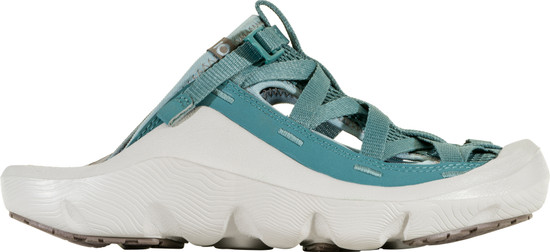More steps, fewer footprints.
We understand every piece of footwear we make impacts the environment we love. That's why we strive to do better with every step. We use best-in-the-industry, environmentally preferred materials as certified by global responsible sourcing organizations and certifications that align with our quality assurance standards.
Oboz Preferred Materials
We use a wide variety of materials in our footwear. When evaluating these materials we not only review sustainability and circularity, but also durability. We do this because if one part of a shoe fails, the whole shoe can end up in the landfill. So, the longer the footwear can stay on your feet and out of the landfill, the better for the environment.
Below you will see our Oboz Preferred Materials guideline. We use this as our guide to consistently benchmark all styles in the Oboz Footwear product range toward meeting a target of 20% of Environmentally Preferred Material content (by-weight) by end of 2026.

Preferred Material
These are any of the materials used to make our footwear that have a lesser or reduced effect on human health and the environment when compared with other materials that serve the same purpose.
Guide and resource used for setting Preferred Material standards: FDRA's Footwear Environmentally Preferred Material Guide (www.shoesustainability.com)

Percentage by Weight
Not all parts and pieces of a shoe are equal when it comes to impact. We measure our materials as a percentage by weight. This way we can focus on those parts that make the most impact on the environment. This is calculated by taking the weight of the Preferred Materials of one pair (men's size 9 and women's size 7), dividing by the full weight of the pair, and multiplying the result by 100.

Recycled Content
These materials have been previously used and serve as substitutes for raw materials taken from natural resources like petroleum, natural gas, and trees.
Recycled Claim Standard (RCS), Global Recycled Standard (GRS), and Recycled Wool Standard (RWS) are international, voluntary standards that set requirements for third-party certification of recycled input and chain of custody.
Learn more about the RCS & GRS here.
Learn more about responsible wool standards here.

Bio-based Content
Bio-based materials are derived from plants and other renewable materials, which helps us to decrease our use of non-renewable resources, like petroleum.
Learn more about biobased (ASTM D6866 & USDA) standards here.













